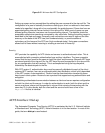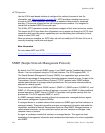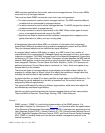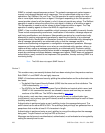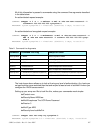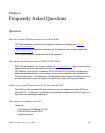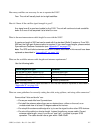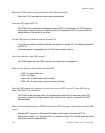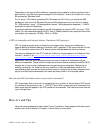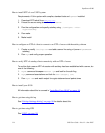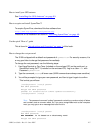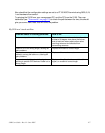110 S100 User Guide – Rev. D – June 2005
SyncServer S100
• With an optional Rubidium oscillator installed, an IRIG time code output and an IRIG time
code input are available from the Rubidium oscillator cable. On units without the
Rubidium oscillator, a D-BNC Signal Breakout Cable BC11576-1000 provides a 1 PPS
output, an IRIG time code output, and an IRIG time code input.
How does the S100 handle Leap Second?
Today’s clocks keep pace with one another to within two or three millionths of a second over
a year’s time. However, the earth on its rotation can accumulate almost a full second of error
in a year. This time is deleted (or added, if needed) as a leap second from (or to) the UTC
time on the last day of June or December in the affected year. This way, the clocks stay in
step with the earth’s rotation.
The GPS satellites send notice of an upcoming leap second about two months in advance.
The S100 receives this notice and, following NTP specifications, starts advising clients 24
hours in advance. At the leap second event, the S100 will add or delete the leap second from
the transmitted time.
Note: The S100 will do the same to an IEEE 1344 IRIG B signal. However, in the event of
a leap second, if the time source is regular IRIG B, dial-up, 1PPS, or Freerun (including
ACTS), you must pre-program the leap second event with the command leap so that the
S100 can be notified and maintain time correctly.
What signal strengths are required by the S100 receiver to start tracking?
The S100 requires four satellite signals with strengths greater than 6 to turn the tracking LED
on. After tracking, the S100 requires only one satellite signal to maintain its time. If it loses the
fourth signal, the S100 enters a holdover state and continues providing time.
How do I check versions of the software in the S100?
To check the software version, use the web-based administrative interface main admin menu,
System Status page.
What is the maximum number of computers that can be networked to the S100?
The S100 acts as a standalone time server. Average time to process the NTP request is less
than 1 millisecond. Testing has shown the S100 can handle approximately 10,000 requests
per second. However, clients running as Stratum 2 computers access the S100 in an interval
of 64 to 65,536 seconds as the time progresses. The optimum number of computers is based
on the capability of the network and on the acceptable level on load on the network.




